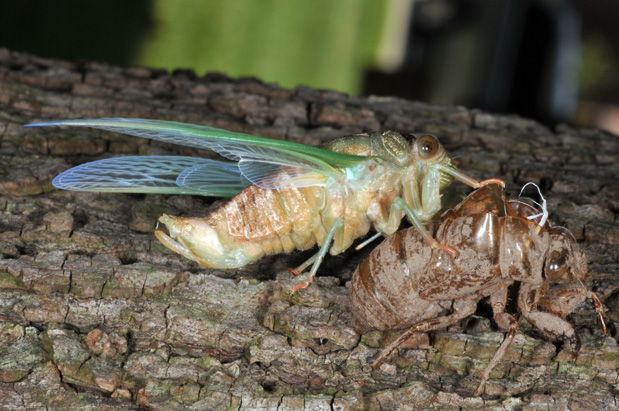

|
|
Cicada larva
(John Obermeyer, Purdue University) |
|
Common Name: Cicada - larva
See also: adult | damage Scientific Name: Cicadidae: several species Status: annoying; can damage young trees Damaging Stage: adult Biology: Two groups of cicadas, periodical and annual, occur in many parts of the central and eastern United States. These are primarily nuisance pests, best known for the very loud, shrill mating and congregation calls that they make as adults. Periodical cicadas are 1 to 2 inches long and have black bodies and orange wing veins. Annual cicadas can be more than 2 inches long with very unique green or brown bodies and large eyes. Both have prominent wide-set eyes, short antennae, and clear wings held rooflike over the abdomen. After mating, female cicadas cut slits into the tender bark of young twigs in which to lay their eggs. When the eggs hatch, the nymphs drop to the ground and bury themselves down into the soil until they find a tree root where they can attach and begin to suck out juices. The major difference between the periodical and annual cicadas lies in the length of time that they live as nymphs. Annual cicadas have a one-year life cycle and emerge in early summer every year. Periodical cicadas may live 7, 13, or 17 years (depending upon the species) as nymphs and then they undergo a very well synchronized mass adult emergence. |